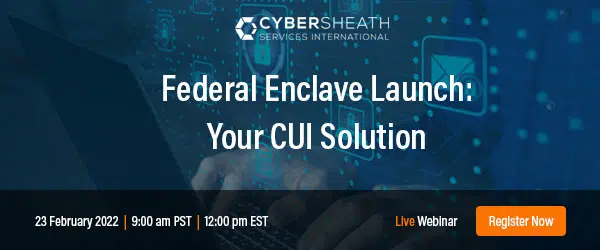When you’re looking to protect Controlled Unclassified Information (CUI), a CUI enclave offers several benefits. But how do you actually get started and what should you consider to ensure you’re successful?
Where to establish the enclave boundary
You need a strategy to isolate CUI and Federal Contract Information (FCI), training for users on the enclave, and ongoing monitoring for compliance with organizational policy. Remember that adopting an enclave might mean a duplicate system to isolate CUI and FCI from your other business.
This may incur indirect costs and cause user inconvenience, so consider carefully where to establish the system boundary for Cybersecurity Maturity Model Certification (CMMC) certification.
Practices vs controls
CMMC’s framework doesn’t specify how a security practice should be applied and most of the required practices allow for multiple avenues of successful implementation. However, when adopting an enclave to meet CMMC compliance, it’s critical to ensure that your enclave compliance strategy aligns with the controls outlined in NIST 800-171 and NIST 800-53. This subtlety is another factor you need to consider when your security professionals embark on the CMMC journey.
Educate them around the nuances of practices vs. controls and be sure your external security assessors have completed CMMC training.
CyberSheath’s Federal Enclave accounts for the multiple approaches to compliance and is able to adjust to the different levels of CMMC compliance, making it a key part of any effective enclave compliance strategy.
Next steps
CyberSheath has helped more than 500 clients discover their compliance starting point and roadmap. We’re holding a webinar on Feb. 23 that covers these considerations in greater depth and how Federal Enclave helps you ensure compliance. Register now!

